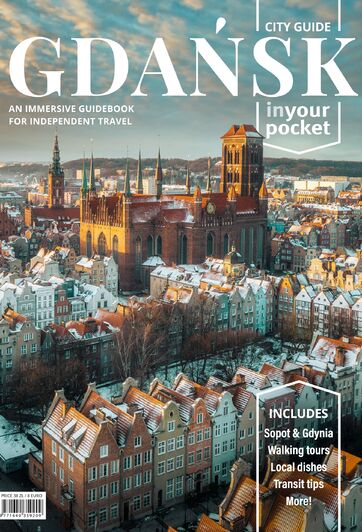Now a bustling conurbation known locally as Trójmiasto (Tri-city), each of the individual members has its own specific history. While colonisation in the Gdańsk area dates back to the 7th century when it was a small group of fishing hamlets, Sopot was transformed into a spa resort over a millennia later. Even more recently, Gdynia’s history was changed dramatically as a result of the Treaty of Versailles less than a hundred years ago.

10th Century
Duke Mieszko I converts to Christianity in 960 and unites/converts a number of Slavic tribes in what becomes known as Civitas Schinesghe (OLD PL: Cities of the Duke), now in the centre of Poland.
Poland's first ruler. Gdańsk is believed to have been
established in the 980s, though first recorded in 997.
The capital is Gniezno, an area which is historically-associated with the tribal group known as Polans (from Proto-Slavic meaning 'field'). This name would inform the latin name for this new kingdom - Polonia. Within a couple of years of the christening of these lands, Mieszko was able to gain control of the Bay of Gdańsk and archaeologists believed he probably built a stronghold there in the 980s, understanding the importance of this location where the Vistula river opens into the Baltic Sea.
Adalbert, The Bishop of Prague, christens the inhabitants of what is recorded as Gyddanzyc by his biographer, Johannes Canaparius, with the year 997 commonly accepted as the year that Gdańsk was founded. Archaeologists believe that Duke Mieszko I, the first ruler of Christianised-Poland, probably built a stronghold in there in the 980s after recognising its strategic importance on the Baltic Sea.
12th Century
In 1125, High Duke Konrad of Poland invites the Order of Teutonic Knights, Germanic crusaders recently evicted from the Kingdom of Hungary, to help deal with ongoing raids of the pagan Prussian tribes on his northern borders. In exchange for their assistance, Konrad grants the Order land near Chełmno, near Toruń.
13th Century
Gdańsk welcomes vessels from England, Sweden and the Walloon Lands. The Teutonic Knights penetrate Polish regions from the west in 1226. Gdynia is first mentioned under the name Gdina as a fishing village in 1253. The bishop’s document which mentions it says that it belonged to Oksywie, the oldest settlement in the area dating from the first half of the 8th century. Today Oksywie is a part of Gdynia.
Although human settlement in what is now Sopot can be traced back over 2,500 years and a fort is known to have existed between the 7th and 11th centuries, it isn’t until the 13th century that the first recorded mention of Sopot can be found.
14th Century
The Teutonic Knights make a treacherous assault on Gdańsk in 1308. The Knights also crown Malbork, 60km south, the capital of their Teutonic state. In 1361 Gdańsk joins the Hanseatic League, a mercantile organisation, and its seaport prospers.
15th Century
In 1406, the Teutonic Knights build the now-famous castle at Marienburg, now Malbork.
Polish-Lithuanian forces defeat the Teutonic Knights at the Battle of Grunwald in 1410, thereby stopping German expansion eastward. As a result of the Second Peace of Toruń in 1466, Sopot becomes part of the Polish state.

16th Century
Gdańsk enjoys a golden era, prospering into a rich seaport and important centre of trade and culture. Besides Germans, Gdańsk’s ethnic make-up is predominantly Polish, Dutch, Russian and Jewish, as well as a large number of Scotsmen
17th Century
At the end of the European Renaissance, Gdańsk would produce two of it's greatest minds:
Johannes Hevelius was born in 1611 and made huge contributions to the field of Astronomy. He is considered 'the founder of lunar topography', in which he devoted four years to describing and charting the surface of the moon. He made countless observations of sunspots and constellations (many are still used today) and discovered four comets. Outside of his astronomical pursuits, he made a living as a successful brewer, of which his family's brand of beer, 'Jopen', is still in production today. Hevelius was active in local politics and also served as the mayor of Gdańsk for a period.
Perhaps a more recognisable name in science, Daniel Fahrenheit was born in 1686 and was the pioneer of exact thermometry, that is, measuring temperature. He acheived this upon his invention of the mercury-in-glass thermometer in 1710. You can see a working replica of one of his earliest prototypes on ul. Długi Targ, just across from the Neptun Fountain!
The scientific legacy of Gdańsk would continue into the 18th Century. Daniel Gralath (1708 – 1767), another one-time Mayor of Gdańsk, would found the Gdańsk Research Society and studied the natural sciences and electricity. Krzysztof Celestyn Mrongovius (1764 – 1855) was a linguist who pioneered research into the Polish and Kashubian languages and is often credited as developing the Polish-German language dictionary.

18th Century
Poland becomes a playground for Tsar Peter the Great, and in 1734 Gdańsk is besieged by the Russian army. The siege sees the village of Gdynia burned to the ground and Sopot seriously damaged. In 1772, Austria, Prussia and Russia impose the first partition of Poland and the whole area becomes part of Prussia. Gdańsk, now Danzig, loses its trade routes and falls into decline. A Prussian-Russian agreement on the second partition of Poland is concluded in 1793. In 1795 Austria, Prussia and Russia impose a third partition of Poland, ending Polish independence for more than a century and wiping the country from the map completely.

19th Century
Napoleon’s advance eastwards sees Gdańsk established as a free city, with French troops stationed there. After Napoleon’s defeat and the Congress of Vienna in 1815, Poland is partitioned anew: Danzig (Gdańsk), Zoppot (Sopot) and Gdingen (Gdynia) are given back to Prussia. In 1819, Carl Christoph Wegner makes the first attempt to turn Zoppot into a seaside resort by building a bath-house and changing rooms but the venture fails. At this time there are 23 houses in Zoppot and a population of 350. In 1823, Jean Georges Haffner, a doctor in Napoleon’s army, starts the building of a seaside resort by building the Zoppot Therapeutic House, wooden baths and the beginnings of the pier. With the opening of a Danzig – Köslin (Koszalin) train line in 1870, which is then extended to Berlin, Zoppot becomes more accessible to holidaymakers. The town quickly grows into an elegant resort and records visitor numbers of nearly 12,500 people by 1900. In 1871, the area is officially incorporated into the German Empire. In 1877, the Zoppot council purchase the bathing houses from Haffner’s heirs and build a second bathing house and extend the pier to 85 metres.
Read our article on Something In The Water - Sopot Spa Resort
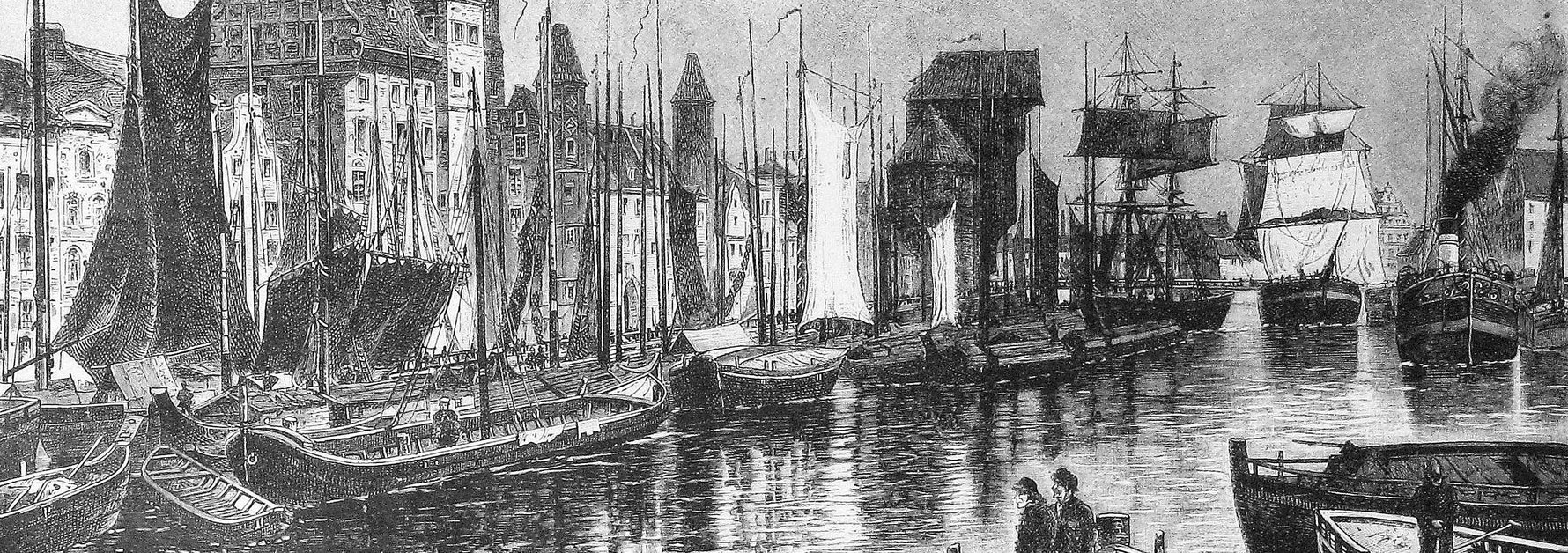
20th Century
The Kaiser, Wilhelm II, grants Zoppot city rights on the 8th of October 1901, while neighbouring Gdingen develops as a small seaside resort centred around what is today ul. Świętojańska, Pl. Kaszubski, ul Portowa and ul. Starowiejska.
In the days before WWI, Zoppot’s population has increased to 17,400 people and visitor numbers have reached 20,000 annually. On 11th November 1918, with Imperial Germany defeated, the partition collapses and Poland regains independence giving birth to what is regarded as the Second Polish Republic. Danzig is caught in a tug-of-war between Germany and Poland who turn to the League of Nations to decide on control. With the majority of the city’s inhabitants considered to be of German origin but with a financially ruined Germany in no state to provide for them plus the worries of the western powers that Poland might fall under the influence of Bolshevik Russia, a compromise is hashed together which sees the creation of The Free City of Danzig. Formerly established on November 15 1920, the city incorporates Danzig, Zoppot (but not Gdingen) as well as a large part of the surrounding area and sees the creation of a separate parliament, currency and postal stamps. With Zoppot incorporated into the Free City of Danzig, its northern border becomes the border between the Free City and the newly reborn Polish state. The Therapeutic House is converted into a casino.
The Treaty of Versailles changes Gdynia forever though. Poland is awarded access to the sea via a narrow strip of land which is to become infamously known as The Polish Corridor. Gdingen, now renamed Gdynia finds itself sat at the top of this corridor.
Read our article on What Was The Polish Corridor?
Read our article on Gdynia - Poland's Gateway to the World
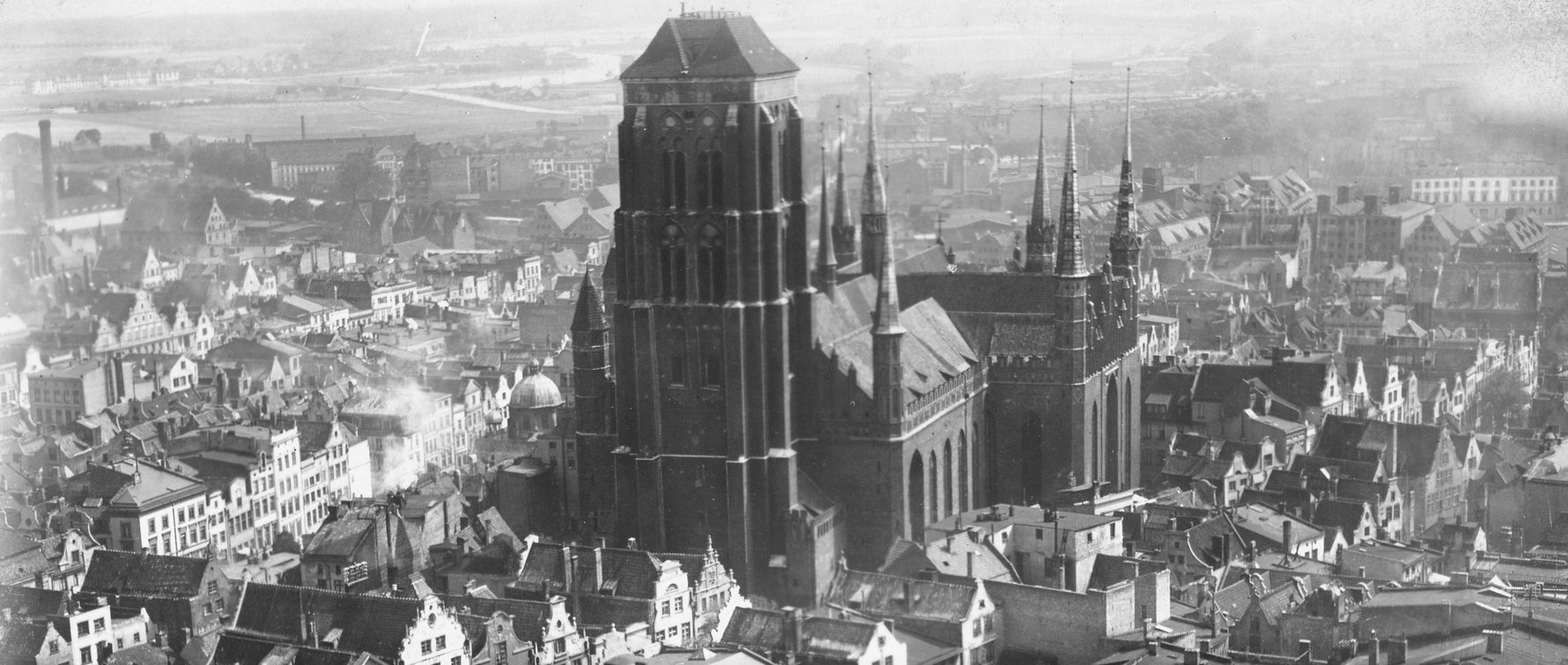
1920s
The Polish Parliament passes a bill about the building of a major port facility at Gdynia on September 23 1922. The village expands rapidly as workers from all over Poland are brought in to help with the construction. The first part of the port is opened by the Polish president Stanisław Wojciechowski on April 29 1923, while August 13 of that year sees the first ship, the French ship Kentucky, enter the port. Gdynia is granted city rights on February 10 1926, and at this point has 12,000 residents. The pier in Sopot is extended to its current length of 512 metres in 1928 and becomes the longest wooden pier in Europe.
1930s
The Tri-city area prospers but the rise of Adolf Hitler soon sees the government of the Free City of Danzig come under the control of the Nazis. Tensions rise both within the Free City and over the border in neighbouring Poland. In 1939, World War Two starts with Nazi Germany’s September 1 attack on Poland’s military posts on Westerplatte as Hitler invades to re-incorporate Danzig to the German Reich.
Read our article on WWII in Gdańsk
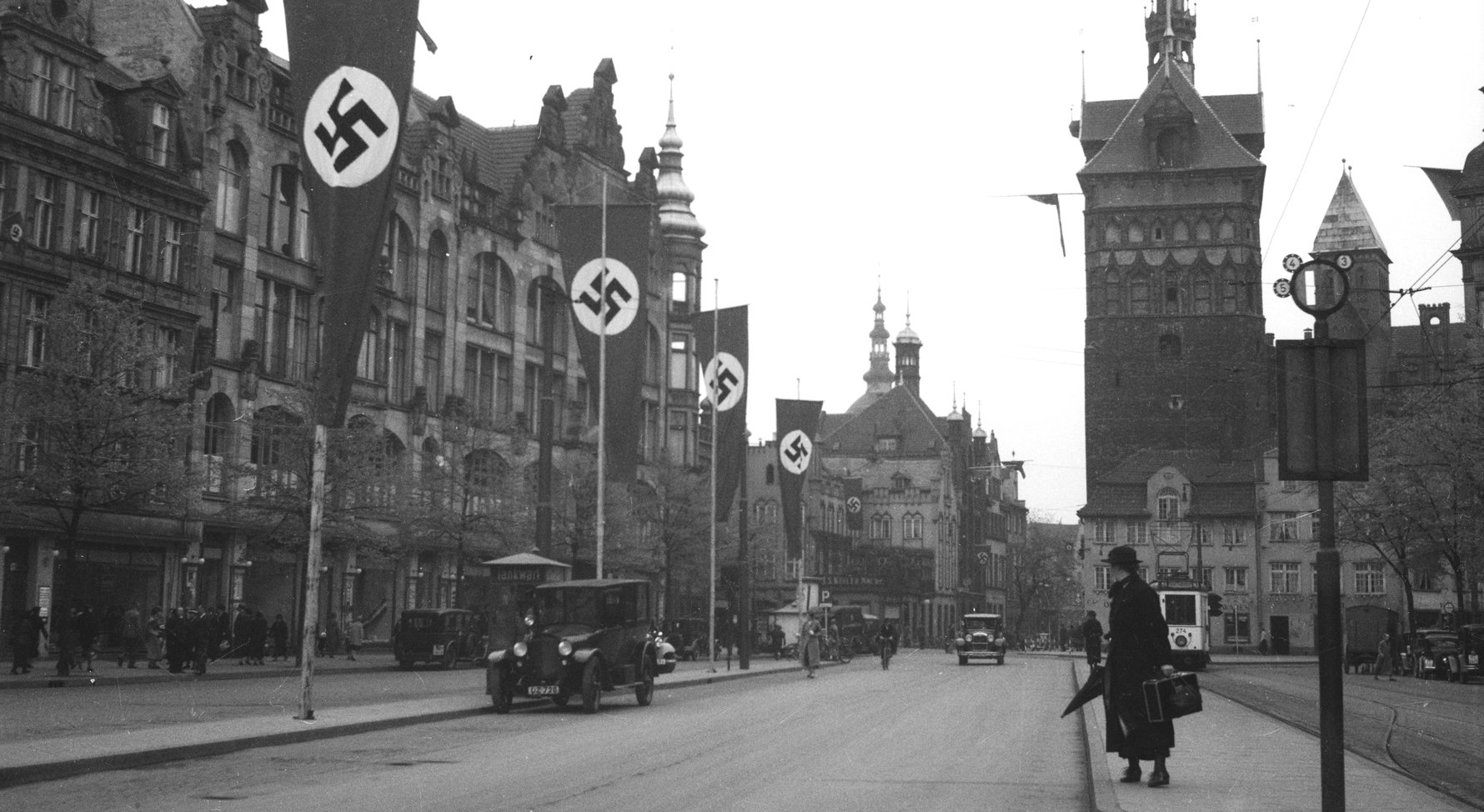
1940s
In June 1941, Hitler reneges on the Molotov-Ribbentrop agreement, which has seen Poland partitioned between Nazi Germany and the Soviet Union since September 1939, and invades eastern Poland. The Nazis make Poland their primary killing ground. Six million Poles, including three million Jews, are killed. Although most of Free City Danzig’s pre-war Jewish population managed to escape in time to avoid the Holocaust, much of the city’s Polish intelligentsia is rounded up and murdered in the nearby Stutthoff death camp. By the outbreak of war, Gdynia has rapidly grown to the 6th largest city in Poland with a population of over 120,000 people. September 1 –19 sees a heroic defence of the city but eventual defeat sees Nazi Germany occupy Gdynia, incorporate it to the German Reich, rename it Gotenhafen and expel the local population.
On March 23rd 1945 the Red Army enters Zoppot and the German population is driven out, in some cases literally into the sea. Around 10% of the city is destroyed with the most serious damage in the baths/casino area. Gdynia is liberated on March 28 by Poles fighting alongside the Red Army. On March 30, 1945, the Soviets finally seize Danzig, now a smouldering mass of rubble.
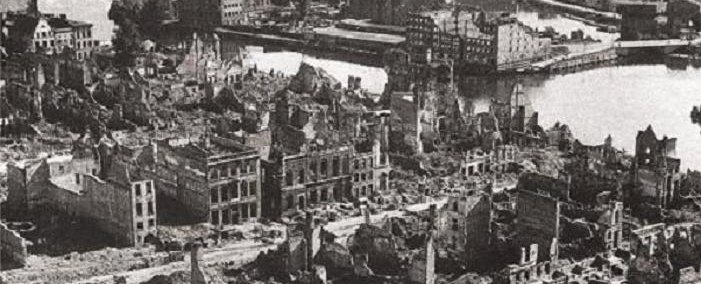
From 1945 onwards Poland is Sovietised. Control of the area is given to Poland and the cities are renamed with their Polish names. Most Germans are exiled westward, replaced by refugees from eastern Poland. In 1947 the Communists consolidate political monopoly after rigged elections. The 1950s and 1960s mark a time of major urban rebuilding in Gdańsk following the large-scale wartime destruction of the city.
1950s
In 1953 Gdynia is connected to Gdańsk via the SKM light railway system, while in 1955 the Warsaw Pact is created with Poland a member. In 1961, the first Sopot International Song Festival is held, a festival which goes onto become a huge televised event in the Soviet bloc countries.
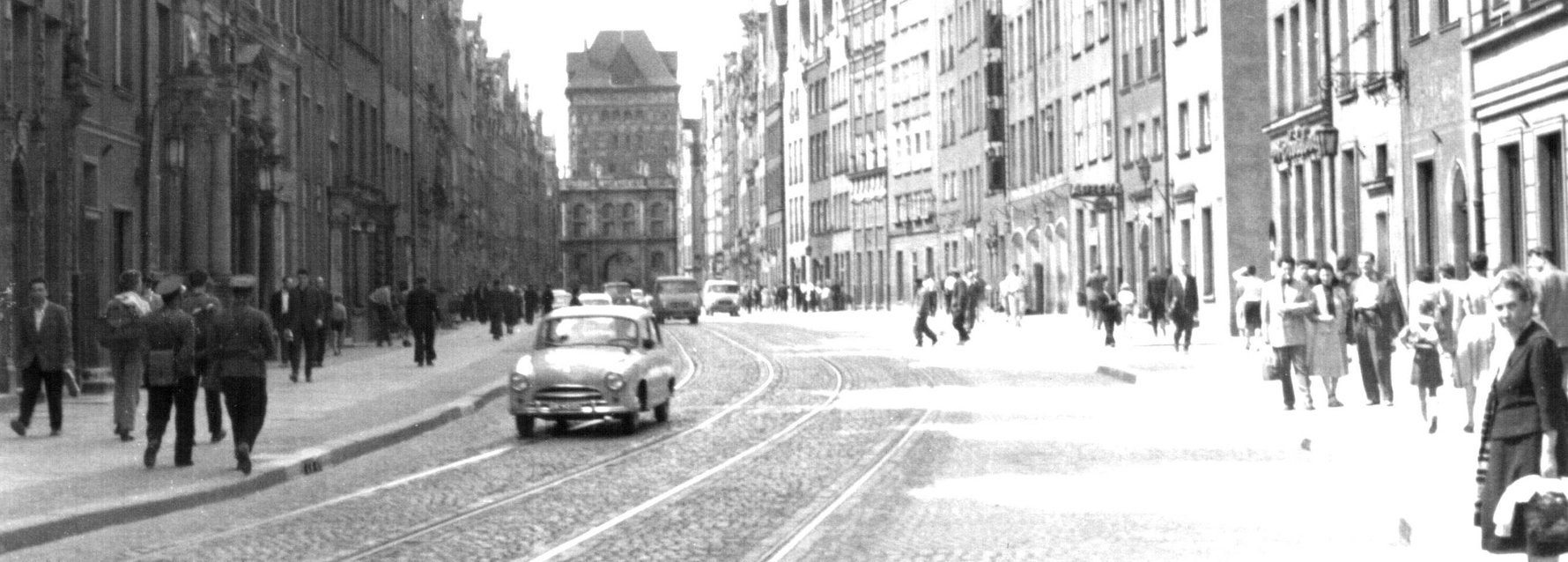
1970s
The events of 1970 in Gdańsk and Gdynia are the first to rock the system. In December, shipyard workers strike to protest poor living standards. The army intervenes on December 17 and opens fire on the protestors, resulting in clashes leaving an estimated 44 people dead. Events on this day will have profound effects on workers for many years to come. This is also the year that West German chancellor Willy Brandt formally renounces German territorial claims to Danzig/Gdańsk. Opposition to the government grows throughout the 1970s although the country is lifted by the 1978 selection of Kraków Cardinal Karol Wojtyła as Pope.
1980s
A general strike is called in August 1980 by the fledgling Solidarność (English: Solidarity) trade union, led by shipyard electrician Lech Wałęsa. After an 18-day sit-in protest, the government gives in and agrees to the strikers' 21 demands. These include the creation of the first free trade unions in the Communist Bloc and marks the first peaceful resolution of grievances. The peace is shattered however by the introduction of Martial Law on December 13, 1981. Solidarność is outlawed by the government and its leadership imprisoned. Other union activists are driven underground. In protest, more than 20,000 Gdańsk citizens take sanctuary in St. Mary’s Church. In 1983, Martial Law is lifted and Lech Wałęsa is awarded the Nobel Peace Prize. The late 1980s see a period of gradual liberalisation due in part to Soviet President Mikhail Gorbachev’s perestroika in the Soviet Union. Renewed strikes in 1988 and a failing economy convince Polish leader General Wojciech Jaruzelski to initiate talks with Solidarność. In 1989, Round Table talks produce a formula for power-sharing between the Communists and Solidarność. Partly-free elections result in sweeping Solidarność victories and the communist regime crumbles.
Read our article on The Story Of Solidarity.

1990s
Following Solidarność’s victory in 1989 the new Finance Minister, Leszek Balcerowicz, launches an ambitious shock-therapy economic reform programme and Lech Wałęsa becomes Poland’s first democratically-elected, post-communist President. In 1995 former communist, Aleksander Kwaśniewski, defeats Wałęsa in presidential elections. The following year the Gdańsk shipyards are declared bankrupt. In 1999 Poland joins NATO.
2000 onwards
On May 1 2004, Poland enters the European Union, while on April 2 2005, the widely admired and respected Pope John Paul II passes away. 2007 sees Civic Platform (PO) defeat Law & Justice (PiS) at the polls which results in local boy Donald Tusk becoming Prime Minister. April 10 2010 sees 96 high-ranking Poles tragically killed in the air disaster at Smoleńsk in Russia. Among the dead are President Lech Kaczyński and his wife, along with a number of well-known Gdanskians, including Solidarity’s Anna Walentynowicz, Senator Maciej Płażyński and MP Arkadiusz Rybicki. In December 2014, Donald Tusk becomes President of the European Council. His party are defeated in the following October’s general election and PiS are returned to power for the first time in 8 years.
The city continues to increase in tourism every year. Typically drawing most of its visitors from Germany in the west and across the Baltic from Scandinavia, tourists from further abroad are also discovering what makes this city such an idyllic location. This is a continuation of its legacy as a port city, which continues to add to its diversity and uniqueness amongst others in Poland.
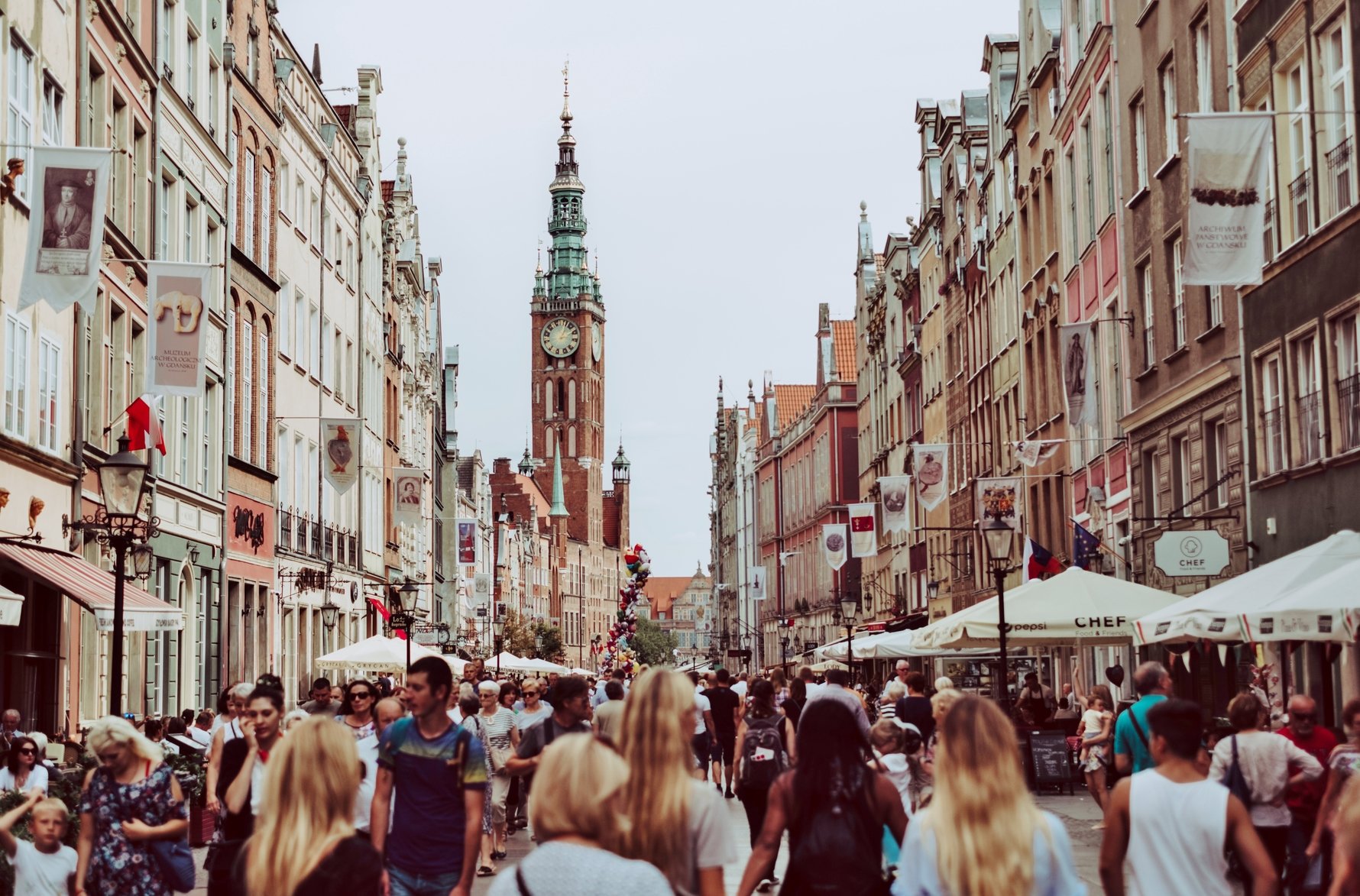
In the 21st Century, Gdańsk has become one of the top tourist destinations in Poland and Europe, with at least 2 million visitors annually!


